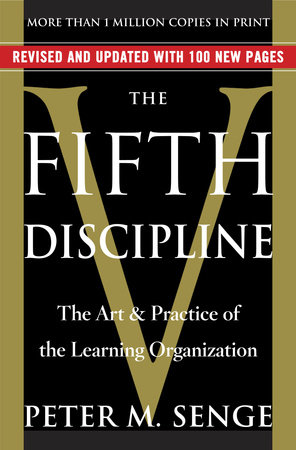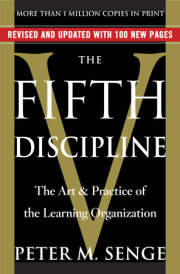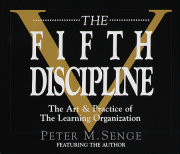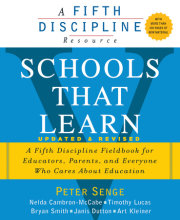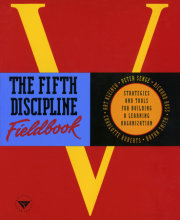1
Give Me a Lever Long Enough… And Single-Handed I Can Move The World
From a very early age, we are taught to break apart problems, to fragment the world. This apparently makes complex tasks and subjects more manageable, but we pay a hidden, enormous price. We can no longer see the consequences of our actions; we lose our intrinsic sense of connection to a larger whole. When we then try to “see the big picture,” we try to reassemble the fragments in our minds, to list and organize all the pieces. But, as physicist David Bohm says, the task is futile–similar to trying to reassemble the fragments of a broken mirror to see a true reflection. Thus, after a while we give up trying to see the whole altogether.
The tools and ideas presented in this book are for destroying the illusion that the world is created of separate, unrelated forces. When we give up this illusion–we can then build “learning organizations,” organizations where people continually expand their capacity to create the results they truly desire, where new and expansive patterns of thinking are nurtured, where collective aspiration is set free, and where people are continually learning how to learn together.
As the world becomes more interconnected and business becomes more complex and dynamic, work must become more “learningful.” It is no longer sufficient to have one person learning for the organization, a Ford or a Sloan or a Watson or a Gates. It’s just not possible any longer to figure it out from the top, and have everyone else following the orders of the “grand strategist.” The organizations that will truly excel in the future will be the organizations that discover how to tap people’s commitment and capacity to learn at all levels in an organization.
Learning organizations are possible because, deep down, we are all learners. No one has to teach an infant to learn. In fact, no one has to teach infants anything. They are intrinsically inquisitive, masterful learners who learn to walk, speak, and pretty much run their households all on their own. Learning organizations are possible because not only is it our nature to learn but we love to learn. Most of us at one time or another have been part of a great team, a group of people who functioned together in an extraordinary way– who trusted one another, who complemented one anothers’s strengths and compensated for one another’s limitations, who had common goals that were larger than individual goals, and who produced extraordinary results. I have met many people who have experienced this sort of profound teamwork–in sports, or in the performing arts, or in business. Many say that they have spent much of their life looking for that experience again. What they experienced was a learning organization. The team that became great didn’t start off great–it
learned how to produce extraordinary results.
One could argue that the entire global business community is learning to learn together, becoming a learning community. Whereas once many industries were dominated by a single, undisputed leader–one IBM, one Kodak, one Xerox–today industries, especially in manufacturing, have dozens of excellent companies. American, European, or Japanese corporations are pulled forward by innovators in China, Malaysia, or Brazil, and they in turn, are pulled by the Koreans and Indians. Dramatic improvements take place in corporations in Italy, Australia, Singapore–and quickly become influential around the world.
There is also another, in some ways deeper, movement toward learning organizations, part of the evolution of industrial society. Material affluence for the majority has gradually shifted people’s orientation toward work–from what Daniel Yankelovich called an “instrumental” view of work, where work was a means to an end, to a more “sacred” view, where people seek the “intrinsic” benefits of work.(1) “Our grandfathers worked six days a week to earn what most of us now earn by Tuesday afternoon,” says Bill O’Brien, former CEO of Hanover Insurance. “The ferment in management will continue until we build organizations that are more consistent with man’s higher aspirations beyond food, shelter and belonging.”
Moreover, many who share these values are now in leadership positions. I find a growing number of organizational leaders who, while still a minority, feel they are part of a profound evolution in the nature of work as a social institution. “Why can’t we do good works at work?” asked Edward Simon, former president of Herman Miller, a sentiment I often hear repeated today. In founding the “Global Compact,” UN Secretary General Kofi Annan invited businesses around the world to build learning communities that elevate global standards for labor rights, and social and environmental responsibility.
Perhaps the most salient reason for building learning organizations is that we are only now starting to understand the capabilities such organizations must possess. For a long time, efforts to build learning organizations were like groping in the dark until the skills, areas of knowledge, and paths for development of such organizations became known. What fundamentally will distinguish learning organizations from traditional authoritarian “controlling organizations” will be the mastery of certain basic disciplines. That is why the “disciplines of the learning organization” are vital.
Copyright © 2006 by Peter M. Senge. All rights reserved. No part of this excerpt may be reproduced or reprinted without permission in writing from the publisher.

